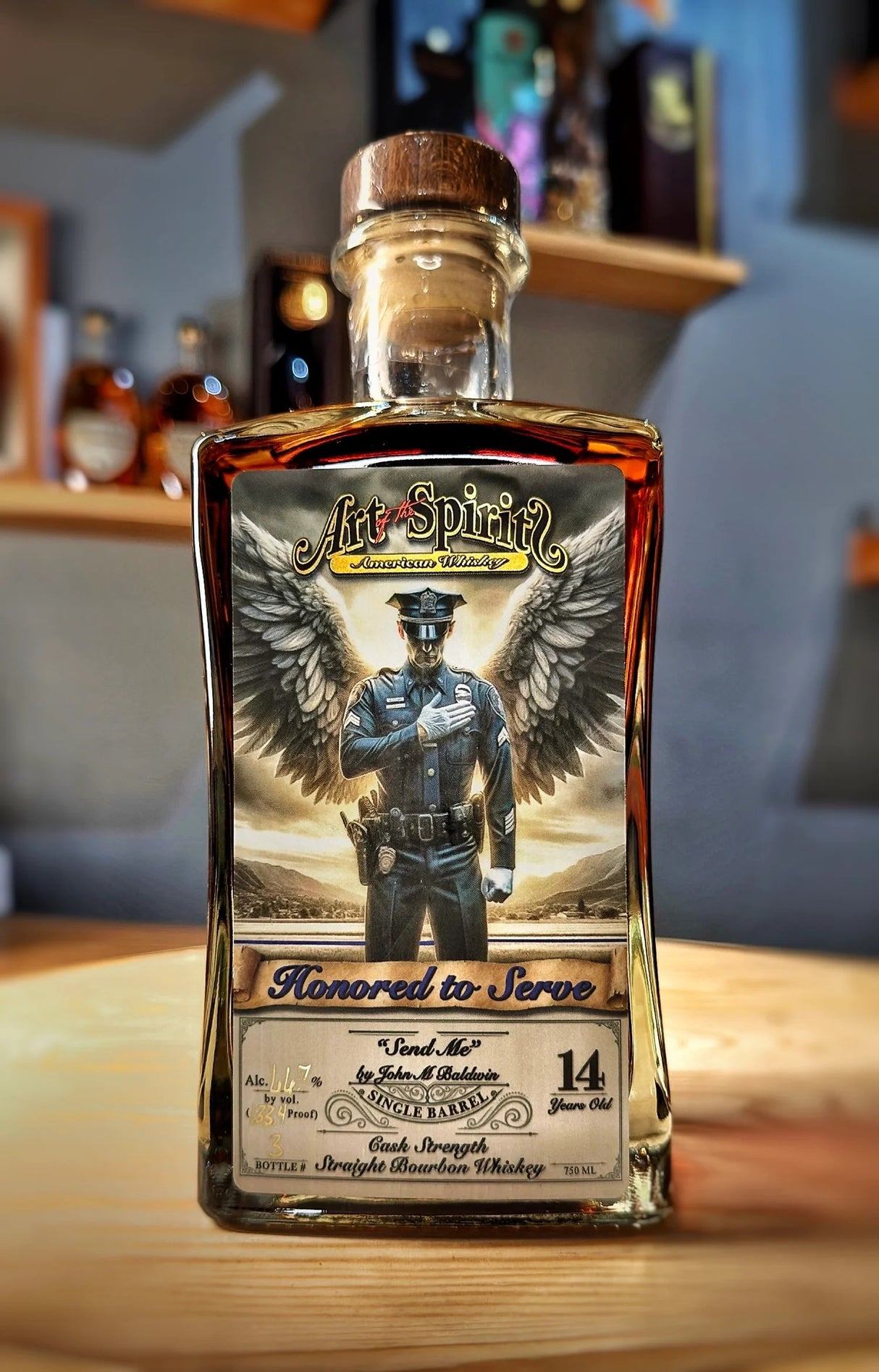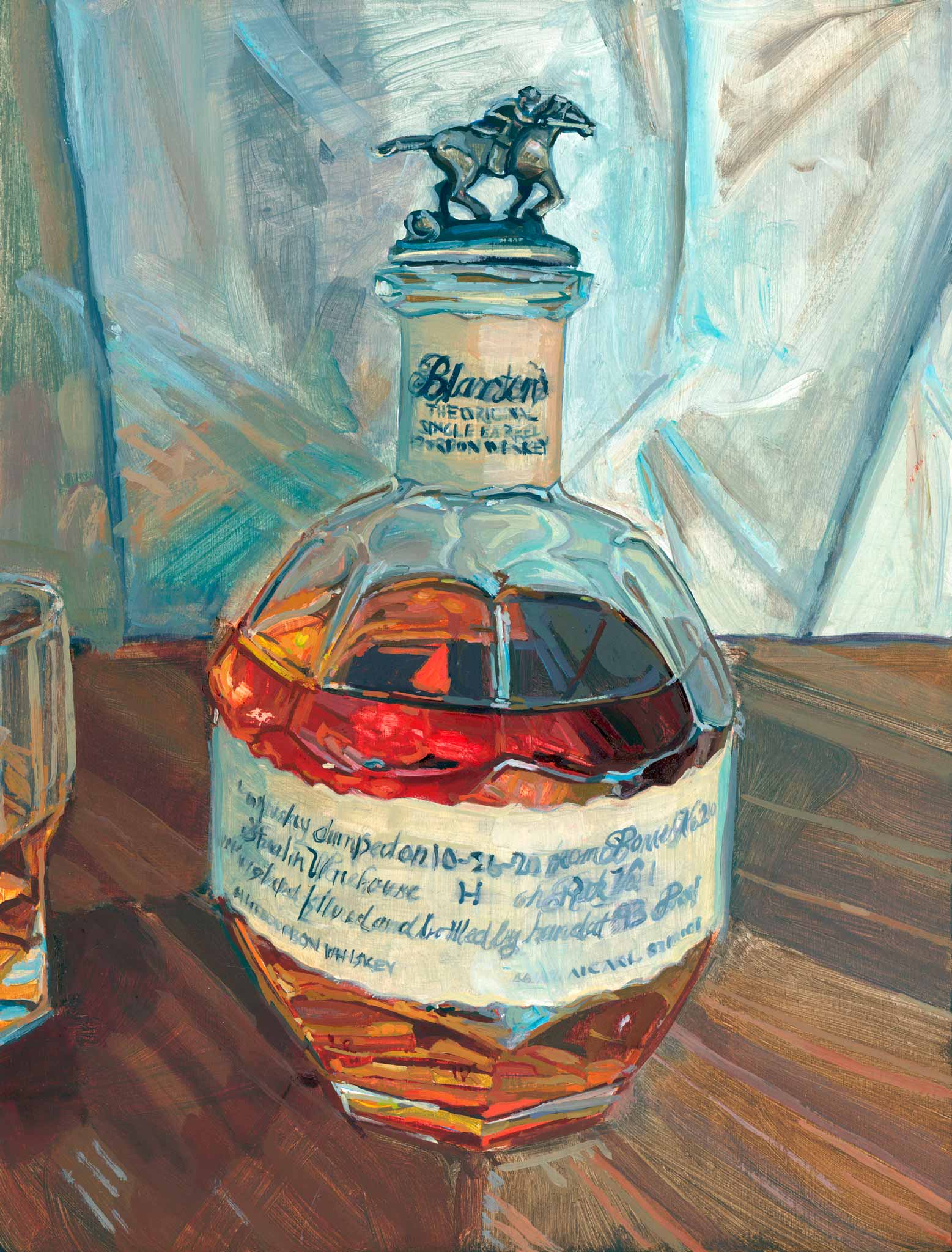Limited Edition Bourbon Art: Why Collectors Are Gathering to Special Finds
Limited Edition Bourbon Art: Why Collectors Are Gathering to Special Finds
Blog Article
The Relevance of Whiskey Art in Celebrating Heritage and Craftsmanship in the Beverage Industry
The complex relationship between scotch art and the party of heritage and workmanship within the drink market can not be overstated. Through thoughtfully designed containers and labels, whiskey brand names envelop their historical roots and the artisanal abilities that define their manufacturing approaches. This creative measurement not only enhances market allure however also functions as a channel for social storytelling, cultivating a deeper link in between the craft and the consumer. As we explore the various aspects of this topic, fascinating concerns concerning the effect of contemporary trends on typical methods arise, prompting additional examination.
The Historical Origins of Whiskey
At the heart of bourbon's appeal lies a rich tapestry of historic roots that map back to old people. The beginnings of whiskey can be linked to the purification methods of the Sumerians and Babylonians around 2000 BCE, where very early types of fermented grain drinks started to arise. It was in the Middle Ages that the art of distillation evolved considerably, particularly in Ireland and Scotland, leading to the creation of scotch as we recognize it today.
The term "scotch" itself stems from the Gaelic word "uisce beatha," implying "water of life." This phrase underscores the social importance of whiskey in Celtic societies, where it was often linked with routines, celebrations, and common bonding. By the 15th century, distillation ended up being an acknowledged craft within reclusive areas, paving the way for the facility of legal distilleries.
As profession courses broadened, scotch's popularity grew, transcending local boundaries and recording the rate of interest of aficionados worldwide. Whiskey Art. This historic trip shows not only the workmanship behind whiskey production however additionally its indispensable function in social and social contexts, noting it as a considerable beverage throughout background
Artistic Expression in Branding
Whiskey branding stands as a compelling junction of artistry and commerce, where visual identity plays an essential function in forming customer perception. The aesthetics of scotch labels, product packaging, and marketing products reflect not just the brand name's story however also its core worths and heritage. Via imaginative expression, distilleries share a narrative that resonates with consumers, stimulating feelings and stimulating connections.
The use of color, typography, and imagery in branding offers to differentiate items in a saturated market. Standard concepts may stimulate a feeling of credibility and craftsmanship, while modern styles can represent advancement and forward-thinking. This calculated artistic direction improves brand acknowledgment and loyalty, enabling consumers to build an individual connection with the whiskey they choose.
Additionally, creative expression in branding often acts as a party of local heritage. Distilleries frequently integrate neighborhood signs or historical references into their layouts, developing a sense of place that welcomes customers to take part in a broader social experience. Ultimately, the virtuosity behind scotch branding not only enhances aesthetic allure however additionally enhances the overall narrative of the brand, promoting a much deeper gratitude for the craftsmanship and heritage embedded in each container.
Workmanship in Container Design
The creativity apparent in whiskey branding prolongs beyond aesthetic identity to incorporate the workmanship associated with bottle layout. Each container functions as a vessel not simply for the spirit within, yet additionally for the tale it outlines its top quality, custom, and beginning. The style process needs careful interest to information, as components such as closure, material, and form contribute dramatically to the total assumption of the whiskey.
Workmanship in bottle layout entails picking top notch glass that can improve the scotch's color and quality, while additionally giving a tactile experience for the customer. The shape of the container should be both functional and cosmetically appealing, typically mirroring the heritage of the brand. Numerous distilleries choose for one-of-a-kind shapes or printed logos that stimulate a feeling of credibility and background.
Furthermore, the label design and typography play an important role in connecting the brand name's story. Realism Art. A well-crafted bottle not only mesmerizes the consumer's eye yet likewise strengthens the brand name's dedication to quality and practice. In this way, the craftsmanship of container design comes to be a vital aspect of the scotch experience, merging virtuosity with a profound regard for heritage
Cultural Value of Scotch Art
Celebrating practice and craftsmanship, the social significance of scotch art goes beyond plain visual appeals, intertwining with the social and historic stories Realism Art of the areas from which it originates. Each bottle works as a canvas, depicting the distinct tales, folklore, and practices that have actually shaped regional whiskey-making practices. The complex designs commonly reflect the heritage of the distillers, incorporating signs and concepts that reverberate with the culture and values of their neighborhoods.

Furthermore, scotch art plays an important function in public celebrations and events, acting as a concrete web link in between people and their shared experiences. By appreciating the creativity in bourbon product packaging, customers grow a much deeper understanding and regard for the craft, ultimately improving their satisfaction of the drink itself.
Modern Trends in Scotch Discussion
Recently, the discussion of whiskey has actually advanced to show modern tastes and patterns while still recognizing typical craftsmanship - Bourbon Art. Distilleries are significantly focusing on visual elements that enhance the total drinking experience, connecting the you can check here void in between heritage and modernity
Innovative container designs have emerged, usually including sustainable materials and artistic tags that inform engaging tales. Numerous brands now collaborate with regional artists, infusing their products with one-of-a-kind visual expressions that resonate with consumers. Additionally, limited-edition releases are commonly packaged in collectible containers, adding worth and allure for aficionados.

Conclusion
In final thought, scotch art offers as an important avenue for expressing the heritage and workmanship integral in the drink sector. Through detailed branding, innovative bottle designs, and culturally considerable creative elements, whiskey brand names properly recognize their practices and get in touch with consumers. This artistic story not just boosts the recognition of bourbon but likewise enhances community identity and satisfaction amongst manufacturers. Eventually, scotch art plays an essential function in preserving and commemorating the rich social tapestry of whiskey-making.


Workmanship in bottle style includes selecting high-quality glass that can improve the whiskey's shade and clarity, while also offering a tactile experience for the consumer. In this way, the workmanship of container design comes to be an important aspect of the scotch experience, combining artistry with an extensive respect for heritage.
In conclusion, scotch art serves as a vital channel for expressing the heritage and workmanship inherent in the drink sector.
Report this page